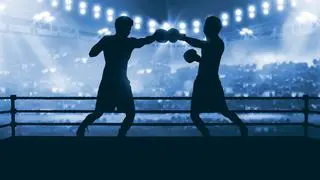“We are tired of being statistics, cases, wonderfully courageous examples to the world, pitiable objects to stimulate funding.” This is what a British writer and activist, Paul Hunt, wrote several years ago in a book of essays called Stigma .
Matt Stutzmann was the US’s most inspiring athlete at the London Paralympic Games 2012. Born without limbs, this archer uses his toe and mouth to shoot arrows. Silver medallist at London, he also holds the record for the longest accurate shot among all athletes.
Such sagas of inspiration are what we routinely supplant for our neglect of the differently abled. The “disabled” are grouped together to be represented by a legion of such superheroes and prodded by the expectation that, if only they dispensed with their wheelchairs and steeled their resolve, they would escape the “drudgery” of their existence.
2012 also saw the single highest spurt in disability hate crimes in the West which is at its peak in the UK, with less than a quarter per cent conviction rate. Disabled people are being maimed, gagged and beaten up while they are simultaneously the worst hit by austerity measures choking government benefits.
This entire framework ignores people with needs, since it privileges individuals over society. It also undermines the care-givers, since it isn’t a mutually beneficial contract and is probably the reason why a majority of care-givers are women. While race, class, wealth or sex doesn’t impart greater worth, bodily ability becomes a source of pervasive social advantage.
This becomes the seed of hate crimes; a just society is envisaged as one in which everyone works for everyone’s benefit. Hence anyone who cannot work is necessarily a burden.
Institutional discrimination is evident in education, employment, support systems, politics and the media. Employers routinely refuse to recruit candidates with impairments and lack of transport facilities ensure that they remain marginalised with minimal access to civic facilities or public spaces.
More insidious is media prejudice. Advertisements, even for the Paralympics, either ignore the entire demographic or deliberately exaggerate their impairments to attract attention. Charities are particularly guilty of peddling either the “pitiable cripple” or the “super cripple” image. The disabled are exploited in both cases, either as props to milk money or as “stories of stoic courage” reinforcing the perceived inadequacy of the rest of the disabled population.
Popular culture is no better. Movies regularly portray the disabled as super cripples, sinister characters, objects of ridicule or a social burden, an asexual being unfit for daily life. This culture of silent oppression and invisibility is most ominous in education. No mention is made of the fact that 90 per cent of the world’s disabled children do not go to school.
This is curiously a horizon where the Orient and the Occident meet. While centuries of libertarian thinking reinforce violent prejudices in the West, the East simply refuses to engage in any discourse.
(Dhruba is a student at the Asian College of Journalism.)







Comments
Comments have to be in English, and in full sentences. They cannot be abusive or personal. Please abide by our community guidelines for posting your comments.
We have migrated to a new commenting platform. If you are already a registered user of TheHindu Businessline and logged in, you may continue to engage with our articles. If you do not have an account please register and login to post comments. Users can access their older comments by logging into their accounts on Vuukle.